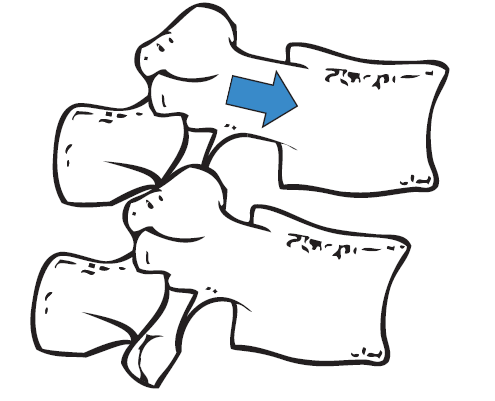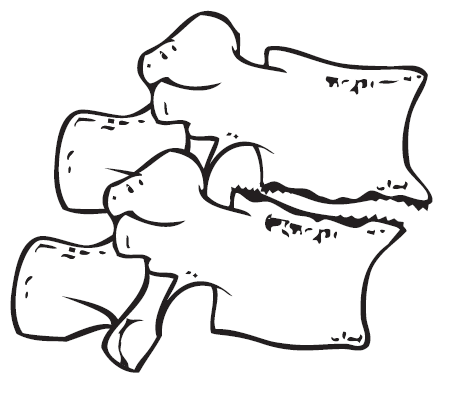Overview – Spondylolisthesis is the sliding or displacement of a vertebrae on the one below. When the vertebrae moves forward, the condition is known as anterolisthesis. When the vertebrae moves backward the condition is known as retrolisthesis.
*Most commonly found in the neck(cervical spine) and low back(lumbar spine).

Dysplastic (type 1): This form of spondylolisthesis occurs as a congenital abnormality (present at birth). Vertebrae are positioned abnormally as a result of elongated or irregularly shaped bones.

Isthmic (type 2): Results from a fracture (broken bone). Can be due to trauma or stress fracture.

Degenerative (type 3): Most commonly found in women over the age of forty. This type is also known as nonspondilolytic spondylolisthesis (without fracture), and is approximately ten times more common at L4 than L3 or L5. Arthritic change and disc degeneration are commonly found in conjunction with degenerative spondylolisthesis.
Traumatic (type 4): Occurs as the result of a severe injury that creates a fracture other than in the pars interarticularis. Most commonly found in the neck (cervical spine) at C2.
Pathologic (type 5): This disorder can result from osteoporosis, Paget’s disease, and Metastatic cancer.
Post Surgical (type 6): Surgery required to repair or decompress a disc herniation can create undue stress that eventually results in a spondylolisthesis. Surgical fusion of two vertebrae may also result in a stress fracture above or below the site.
Symptoms – Symptoms can vary greatly, however lower back pain is usually present. Older patients may have signs of stenosis.
Treatment options – Conservative chiropractic treatment, spinal decompression, home ergonomic advice, therapeutic exercise/stretches, medication, bracing, surgical intervention

